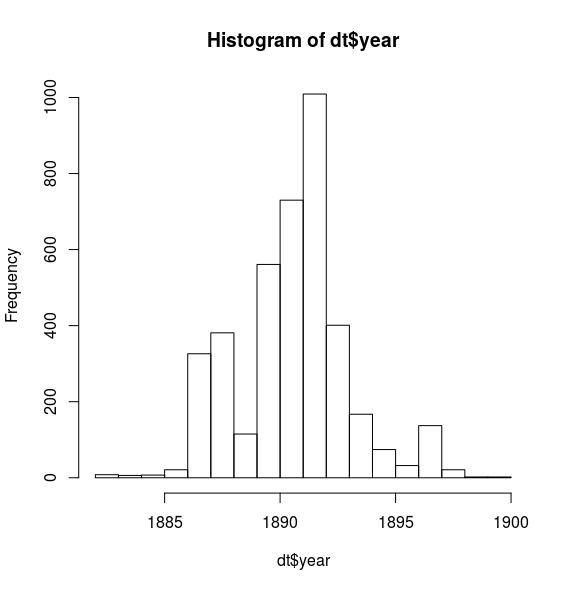Created
January 19, 2018 13:53
-
-
Save jsta/46d76e689055cbf3708002a06e7ddb97 to your computer and use it in GitHub Desktop.
This file contains bidirectional Unicode text that may be interpreted or compiled differently than what appears below. To review, open the file in an editor that reveals hidden Unicode characters.
Learn more about bidirectional Unicode characters
| # See page 209 of Stan reference manual | |
| # https://pymc-devs.github.io/pymc/tutorial.html?highlight=change%20point | |
| library(rstan) | |
| library(boot) | |
| library(dplyr) | |
| # ---- Prep data ---- | |
| data(coal) | |
| coal$year <- floor(coal$date) | |
| coal_tab <- data.frame(table(coal$year), stringsAsFactors = FALSE) | |
| names(coal_tab) <- c("year", "rate") | |
| coal_tab$year <- as.numeric(as.character(coal_tab$year)) | |
| year_seq <- seq(from = range(as.numeric(as.character(coal_tab$year)))[1], | |
| to = range(as.numeric(as.character(coal_tab$year)))[2], | |
| by = 1) | |
| coal_missing <- data.frame( | |
| year = year_seq[ | |
| !(year_seq %in% as.numeric(as.character(coal_tab$year)))], | |
| rate = 0) | |
| coal_tab <- rbind(coal_tab, coal_missing) | |
| coal_tab <- coal_tab[order(coal_tab$year),] | |
| # ---- Fit model ---- | |
| dataList <- list(T = nrow(coal_tab), D = coal_tab$rate, r_l = 1, r_e = 1) | |
| stan_mod <- stan_model(file = "coal_latent.stan") | |
| fit <- sampling(stan_mod, dataList) | |
| # ---- Create plots ---- | |
| year_index <- data.frame(year = coal_tab$year, index = seq_len(nrow(coal_tab))) | |
| dt <- data.frame(extract(fit, pars = "s")) | |
| names(dt) <- "index" | |
| dt <- left_join(dt, year_index) | |
| hist(dt$year) | |
This file contains bidirectional Unicode text that may be interpreted or compiled differently than what appears below. To review, open the file in an editor that reveals hidden Unicode characters.
Learn more about bidirectional Unicode characters
| // Dt: Number of disasters in year t. | |
| // rt: Rate parameter of the Poisson distribution of disasters in year t. | |
| // s: Year in which the rate parameter changes (the switchpoint). | |
| // e: Rate parameter before the switchpoint s. | |
| // l: Rate parameter after the switchpoint s. | |
| // tl, th: Lower and upper boundaries of year t. | |
| // re, rl: Rate parameters of the priors of the early and late rates. | |
| data { | |
| real<lower=0>r_l; | |
| real<lower=0>r_e; | |
| int<lower=1> T; | |
| int<lower=0> D[T]; | |
| } | |
| transformed data { | |
| real log_unif; | |
| log_unif = -log(T); | |
| } | |
| parameters { | |
| real<lower=0> e; | |
| real<lower=0> l; | |
| } | |
| transformed parameters { | |
| vector[T] lp; | |
| lp = rep_vector(log_unif, T); | |
| for (s in 1:T) | |
| for (t in 1:T) | |
| lp[s] = lp[s] + poisson_lpmf(D[t] | t < s ? e : l); | |
| } | |
| model { | |
| e ~ exponential(r_e); | |
| l ~ exponential(r_l); | |
| target += log_sum_exp(lp); | |
| } | |
| generated quantities { | |
| int<lower=1,upper=T> s; | |
| s = categorical_logit_rng(lp); | |
| } |
Author
jsta
commented
Jan 19, 2018

Sign up for free
to join this conversation on GitHub.
Already have an account?
Sign in to comment